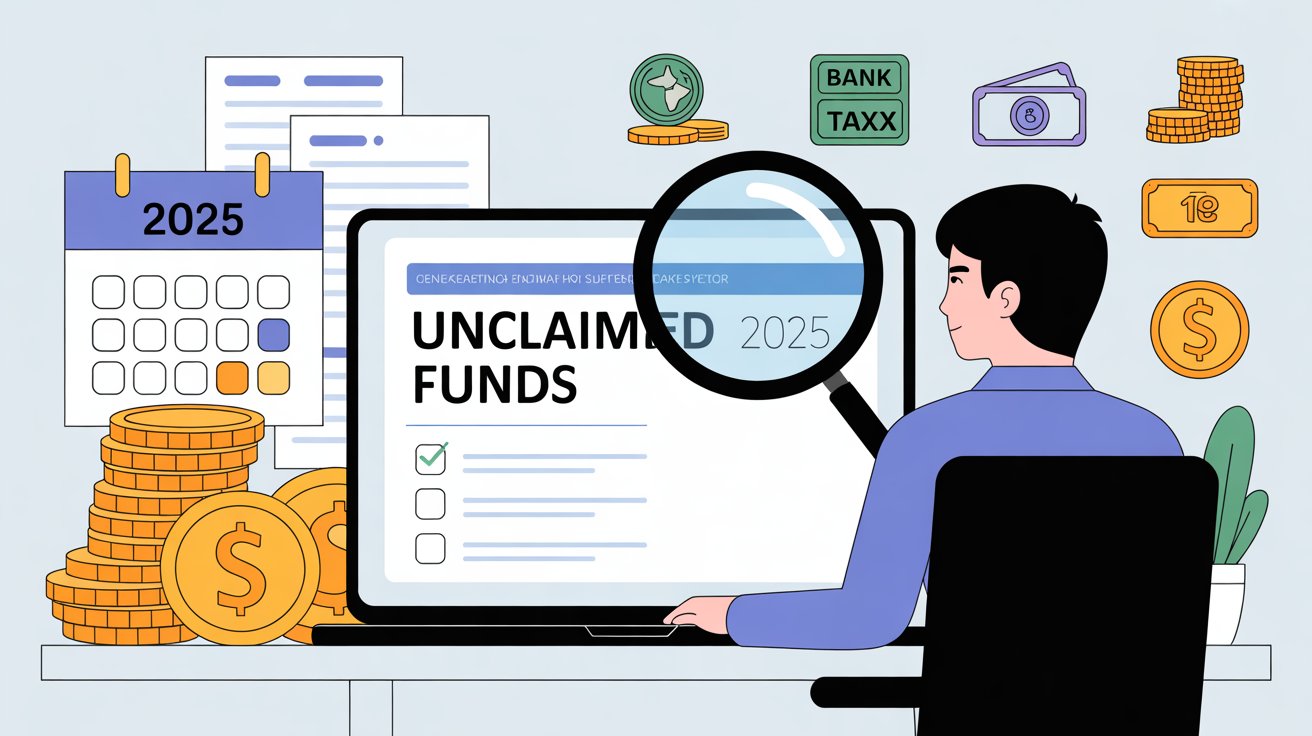
Meta description: Learn a practical, step-by-step method to discover and claim unclaimed money, refunds, dividends, tax returns and other funds you might be owed in 2025.
Everyone leaves money behind sometimes — refunds, old account balances, unpaid wages, dividends, or even forgotten insurance payouts. This short, actionable guide walks you through the exact steps (and documents) you need to check whether you have money to receive in 2025 — and how to claim it safely.
What “money to receive” includes
Unclaimed or owed money can be any of the following:
- Bank account balances, closed-account refunds, or dormant accounts
- Tax refunds or stimulus/benefit overpayments
- Unpaid wages, expense reimbursements, pensions or severance
- Unclaimed property (escrow, security deposits, safe-deposit box proceeds)
- Dividends, brokerage account balances, or transferred stock
- Insurance payouts and forgotten policy proceeds
- Class-action or legal settlement payments
- Cryptocurrency left in inactive accounts or wallets
Quick checklist — what you’ll need before searching
Collect these items first to speed up claims:
- Government-issued ID (passport, driver’s license, national ID)
- Tax ID / Social Security Number or national identification number
- Old account numbers, bank statements, pay stubs, or policy numbers (if available)
- Proof of address (utility bill, bank statement)
- Death certificate & probate documents if claiming for an estate
Step-by-step: how to check (and claim) — do this today
1. Start with official “unclaimed property” registries
Search your country’s or state/province’s official unclaimed property site (look for terms like “unclaimed property,” “missing money,” or “escheat” plus your country/state). These official registries are free and usually the fastest way to find forgotten balances.
2. Check tax authorities for refunds
Log into the tax authority portal for your country (or use the official phone line) and check for outstanding refunds for recent years. If you filed electronically and provided correct bank details, refunds may be waiting.
3. Review old bank and credit-card accounts
Pull statements from old accounts or contact the bank’s customer service. Ask about dormant account balances, returned direct-deposits, and closed-account credits.
4. Inspect payment processors and gig platforms
Log in to PayPal, Stripe, Venmo, Wise, Upwork, Fiverr, Amazon, Shopify, app stores, Apple/Google payout portals and other platforms where you worked or sold items. Small leftover balances often remain under thresholds and can go unclaimed.
5. Check investment accounts and dividends
Contact your broker or check transfer-agent websites for old stock or dividend payments. If you changed brokers, ask whether any shares or checks were left behind.
6. Ask past employers and pension administrators
Request records for unpaid wages, expense reimbursements, or pension benefits. If you changed jobs, check old payroll or HR portals.
7. Search insurance companies and policy registries
Life and other insurance companies sometimes hold unclaimed payouts. Where available, search national life insurance policy registries or contact insurers directly.
8. Look for class-action or legal settlements
If you used a product involved in litigation, check settlement administrator websites — payments and claims windows can reopen or be extended.
9. Check estate and probate records (if you’re an heir)
If you’re the beneficiary of an estate, review probate court records and contact the executor. Unclaimed inheritances sometimes appear as estate property.
10. Don’t forget crypto
Check old exchange accounts and wallet addresses. If you lost private keys, explore wallet recovery options — but be cautious of scams.
How to claim (typical process)
- Verify the listing on an official site. Never accept unsolicited calls asking for payment to release funds.
- Gather documents: ID, proof of address, proof of ownership (old statements, pay stubs), tax ID, and — for heirs — death certificate + probate paperwork.
- Submit the claim via the official portal or by mail as directed. Use tracked shipping where applicable.
- Follow up: note the claim reference number; most official bodies will email status updates.
Safety tips — avoid scams
- Only use official government or institution websites.
- Never pay a fee to search for unclaimed money; legitimate registries are free. (Some services charge to file claims — avoid these or verify their legitimacy.)
- If contacted by phone or email claiming you have funds, confirm via the official website or call the institution’s published number — do not use contact details given in the unsolicited message.
- Don’t give full copies of documents until you confirm the claimant is legitimate.
Record-keeping & follow-up
- Save copies of every form and correspondence.
- Create a small spreadsheet listing where you searched, the site name, date searched, claim numbers, and status.
- Set a calendar reminder to re-check annually (new matches sometimes show up years later).
Final notes
Processes and claim requirements vary by country and state. Start with official government unclaimed-property portals and tax authorities in your jurisdiction, and prioritize free, official searches before paying for help. Searching regularly — and being organized — is the easiest way to reclaim money you didn’t know you had.
#unclaimedmoney2025 #checkunclaimedfunds #howtofindunclaimedmoney #moneytoreceive2025 #claimunclaimedfunds #unclaimedproperty #taxrefund2025 #unpaidwages #findforgottenmoney #dividends2025 #bankrefunds #inheritance2025 #lostinsurancepayouts #claimyourmoney #unclaimedassets